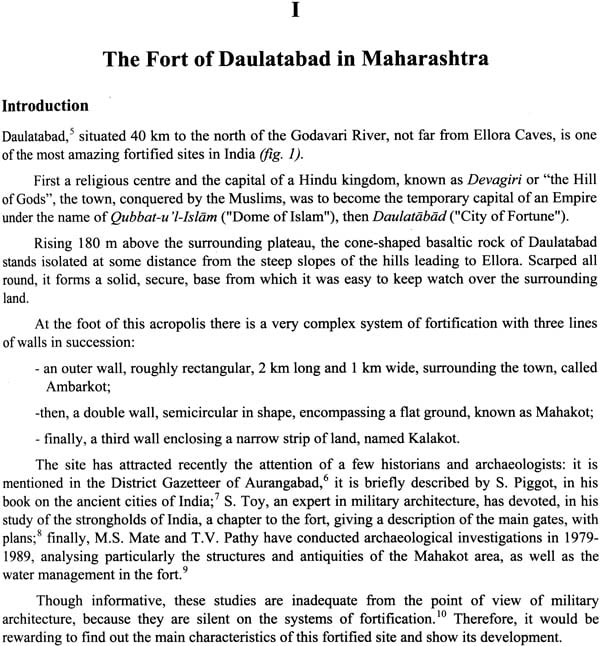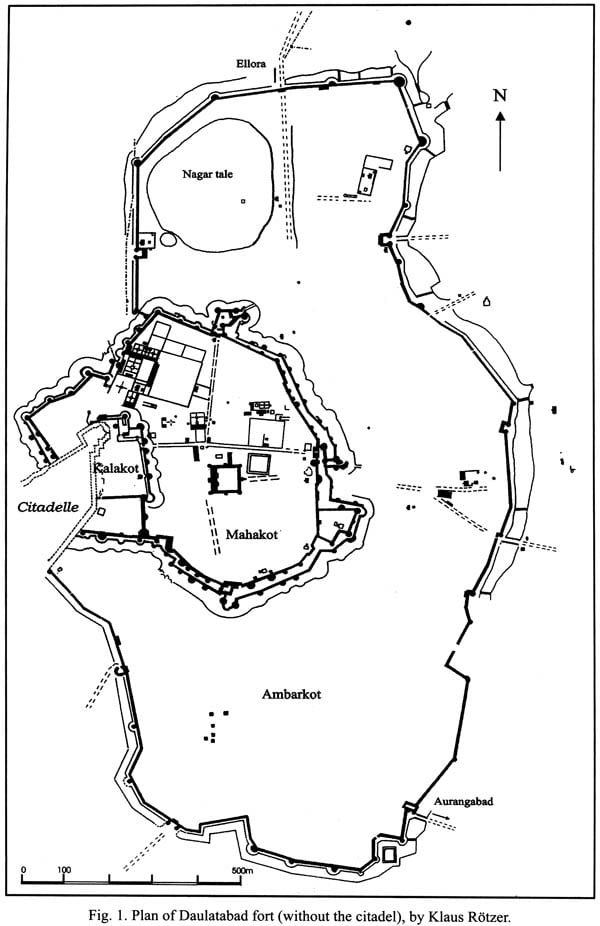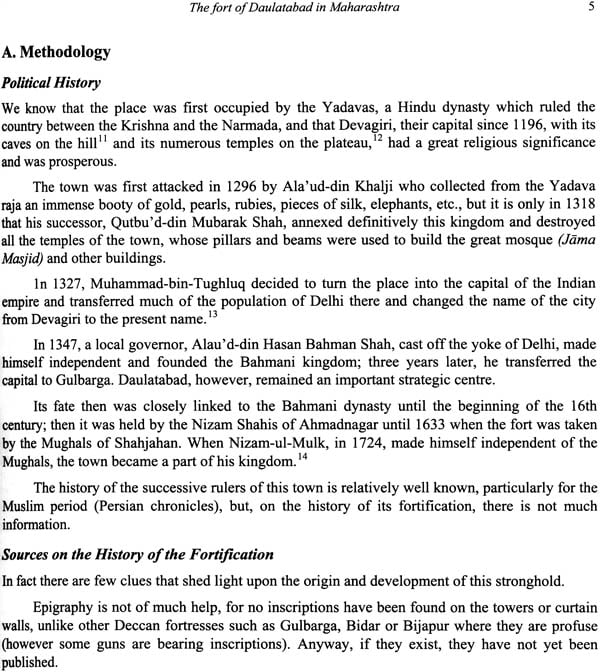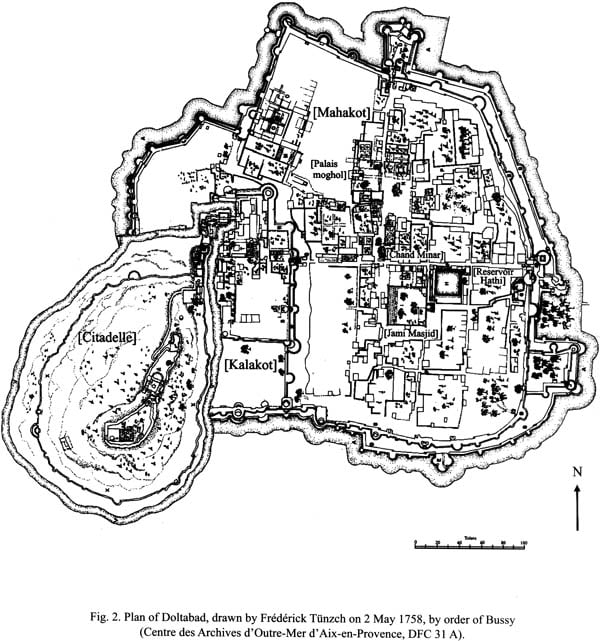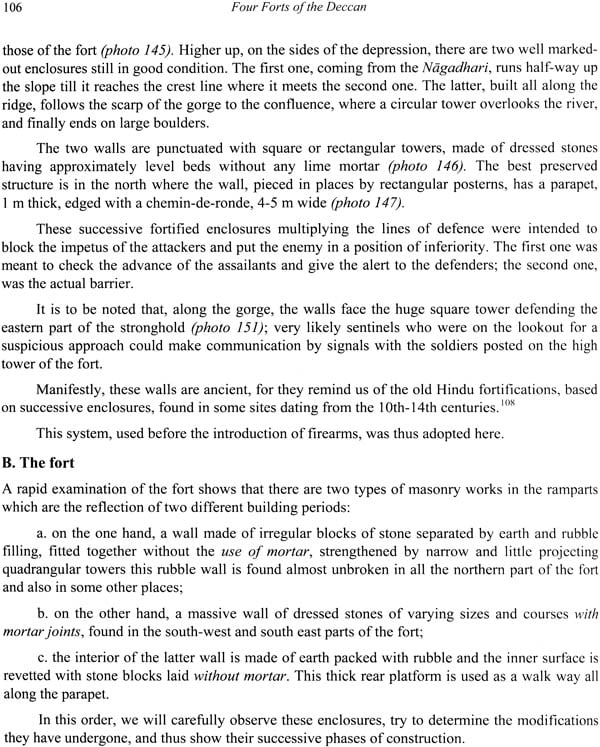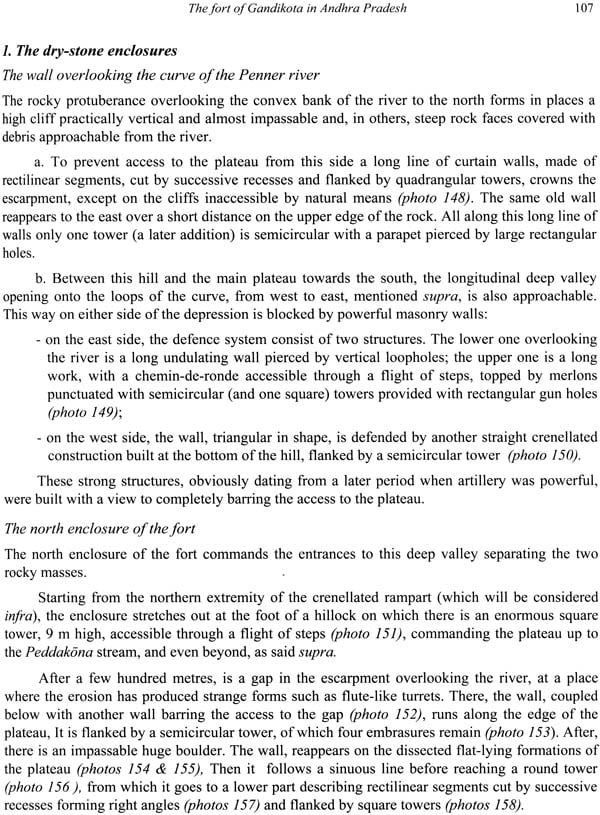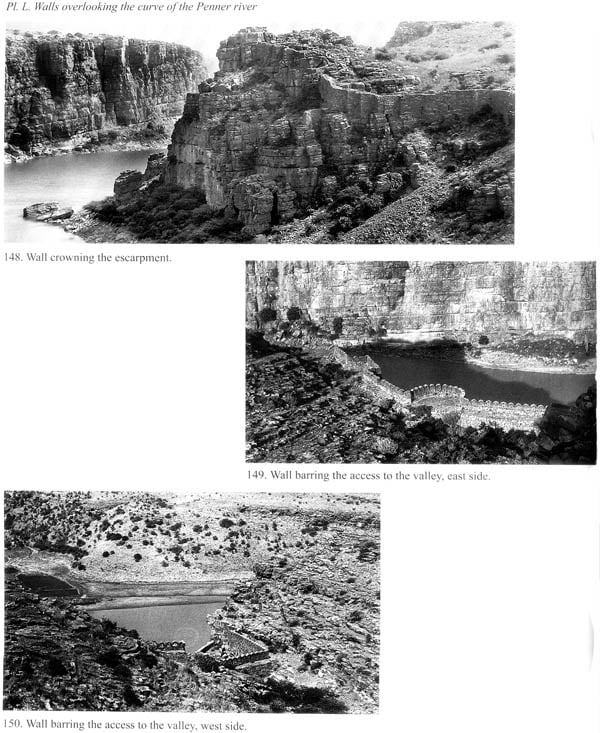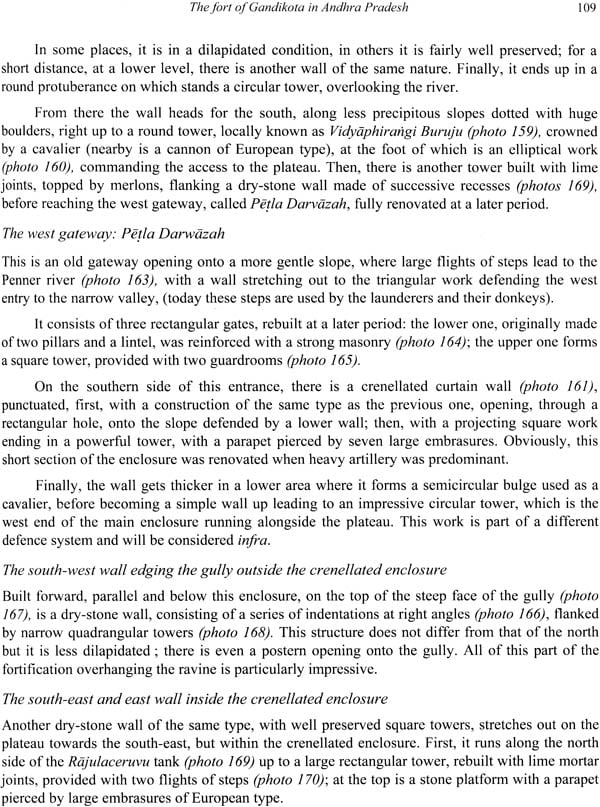
Four Forts of the Deccan
Book Specification
| Item Code: | NAB974 |
| Author: | Jean Deloche |
| Publisher: | Institut Francais De Pondichery |
| Edition: | 2009 |
| ISBN: | 9788184701753 |
| Pages: | 206 (319 B/W Illustrations) |
| Cover: | Paperback |
| Other Details | 11.2 inch X 8.5 inch |
| Weight | 890 gm |
Book Description
From Flap
Jean Deloche, former head of the centre for History and Archaeology, Ecole francaise d’Extreme Orient, Pondicherry, has devoted all of his academic career to the study of Indian history. He is presently a senior associate member of the Ecole francaise d’Extreme-Orient and the Institut francais de Pondichery.
Among the numerous books and articles written by him, four have recently been published in English: Origins of the Urban Development of Pondicherry according to Seventeenth-Century Dutch Plans, 2004, Senji (Gingee) A Fortified City in the Tamil Country, 2005, Studies on Fortification in India, 2007 and Adventures of Jean-Baptiste Chevalier in Eastern India, 2008.
Introduction
In Studies on Fortification in India, I brought together essays on some prominent defensive works which have been constructed over many centuries across the Indian sub-continent, particularly South India. For each period a selection had been made of outstanding examples of fortification in order to analyse the building techniques, considering the evolution of military technology and to bring into focus a reliable method for identifying and dating defensive works in India. These studies were mainly based on intense field work and personal investigations carried our over the past twenty years in numerous hill forts and fortified towns in India.
During all these years of research, a more systematic, minute and thorough examination, was conducted in four significant South Indian strongholds which give evidence of the excellence of the military technology developed in the Deccan from the 13th to the 18th century.
I selected them for very specific reasons: —
- Daulatabad, because the successive periods of building of this most amazing fortified town can be observed from the Yadavas to the Nizam Shahis, i.e. from the 13th to the 17th century;
- Mudugal, because, in this place contested for centuries by Hindu and Muslim rulers, we can fully document the manner in which the Adil Shahis of Bijapur restored the old fort with innovative defence works between the middle of the 18th and the end of the 17th century;
- Gandikota, because there are anomalies that have to be explained about this wonderfully picturesque site, particularly in the layout of the walls and in the form of the flanks built by the Muslims in the second half of the 17th century;
- finally, Gutti, because this stronghold, reputed for its perennial water resources, renovated with works influenced by European designs in the second half of the 18th century, represents the last phase in the history of Indian fortification, before the British period.
The investigation, though careful and sustained, has not been easy. When writing my monograph on Senji (Gingee), A Fortified Town in the Tamil Country, I was lucky to have at my a variety of exceptional sources: official narrative and chronicles in Persian or Marathi, amicable Persian inscriptions directly carved on the works, important documents in Tamil and in French regarding the evolution of the stronghold, which allowed me to fill many lacunae in my documentation; finally, the possibility to examine fully the well-preserved constructions in the site. It was thus possible, by comparing information given in the texts with the material remains, make a global analysis of the archaeological investigation and of the written documents.
Unfortunately, for most of the other strongholds in South India, particularly those which I have selected here, this variety of documents does not exist.
The majority of narratives and chronicles in Persian, Indian and European languages deal more with the military operations which occurred around the fortified sites, particularly sieges, than the construction and development of the strongholds.
Epigraphy is mainly concerned with religious facts. A number of inscriptions in Sanskrit, Tamil, Kannada or Telugu, have been found in and around most of the strongholds proving the antiquity of the human settlements, but giving no information about the fortifications. Except for a few epigraphs in Kannada and Persian inscriptions collected in the main enclosure of Mudugal, no written documents of technical relevance have been found in the forts of Daulatabad, Gandikota and Gutti.
Therefore, in order to classify and interpret these material vestiges and to reconstruct their evolution there is only one course of action left open to us, that is to establish their typology.
To find their characteristics it is necessary to take into account the considerable modifications they have undergone through the centuries. It is not simple because the constructions we see today are the final stage of their evolution, after successive renovations, particularly at the parapet level and it is often difficult to distinguish old edifices dating from a period prior to firearms from those built when gunpowder was introduced into warfare.
But, as mentioned, in the conclusion of my latest book, it is possible to identify the defence systems considering the masonries, the way the materials are laid, fit into each other (with or without lime mortar), with the additions, the modifications in the stone works, the layout of the walls (with rectilinear segments or recesses, with or without batter), the form of the flanks (rectangular, square or circular in plan), the structure of the gateways (with inner open courtyards or with outer works), the nature of the parapets (varied types of crenellation or plain parapets) and thus to establish the relative chronology of the fortifications or the absolute chronology for the architectural elements which are dated or have known characteristics, and thus permits to show the different phases of construction of the strongholds. It is precisely what has been done while observing in detail the defence works of these four major fortifications.
I am aware of the limits of this method of investigation. Such an attempt involves a part of arbitrary simplification, because the same forms could have been used at different periods or in remote places without being directly related and also new patterns might have been adopted while renovating much older constructions. It means that the observation of archaeological data implies a part of hypothesis and uncertainty, that errors of analysis or confusions are possible, but, despite its imperfections and lacunae, it is decisive.
This analysis is not exhaustive; new research will certainly bring some more light to the questions raised here and may disregard some details in my reconstruction, but still I feel that the interpretations put forward here are on the whole fairly accurate.
| Introduction | 1 |
| I. The Fort of Daulatabad in Maharashtra | 3 |
| II. The Fort of Mudugal in Karnataka | 55 |
| III. The Fort of Gandikota in Andhra Pradesh | 99 |
| IV. The fort of Gutti in Andhra Pradesh | 151 |
| General Conclusion | 185 |
| Bibliography | 187 |
| List of illustrations | 191 |
| Index | 203 |
